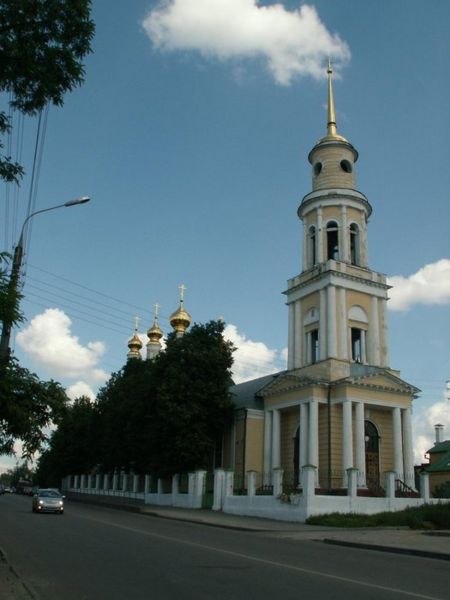OREL (or-ELL)
A
Russian city south of Moscow on the Oka River
Common clues:
City on the Oka; Turgenev's birthplace; Southern
Russian city; City founded by Ivan IV; City south of
Moscow
Crossword
puzzle frequency:
5 times a year
Video: WWII – Battle
for Orel and Bielgorod
Oryol or Orel is a city in Russia, administrative center of Oryol Oblast. It is located on the Oka River, approximately 360 km south-south-west of Moscow. In Russian, the word means eagle. Population: 333,310 (2002 Census). It is served by Orel Airport.

A
street in Orel
While there are no historical records, archaeological evidence proves that a fortress settlement existed between the Oka and Orlik Rivers as early as the 12th century, when the land was a part of the Grand Principality of Chernigov. The name of the fortress is unknown; it may not have been called Oryol at the time. In the 13th century the fortress became a part of the Zvenigorod district of the Karachev Principality. In the early 15th century, the territory was conquered by the Grand Duchy of Lithuania. The city was soon abandoned by its population, after being sacked either by Lithuanians or the Golden Horde. The territory then became a part of Muscovy in the 16th century.
Ivan the Terrible decreed that a new fortress be built on the spot in 1566, for the purpose of defending the Souther borders of Muscovy. The fortress was built very speedily, work starting in the summer of 1566 and ending in the spring of 1567. The location chosen was less than ideal strategically, as the fortress was located on a seasonally flooded low ground easily targeted from the neighboring high ground. Both the speed and location are of course due to the new fortress built upon the ruins of the old one.
False Dmitry I and his army passed through town in 1605; Ivan Bolotnikov in 1606; False Dmitry II camped in Oryol for the winter of 1607–1608. Polish intervention sacked the town in 1611 and 1615; the population abandoned the town after the second sacking and moved to Mtsensk. Oryol district nonetheless continued to exist on paper.
Oryol was rebuilt in 1636. The question of moving the fortress to the more advantageous high ground was in the air up until the 1670s, but the move was never made. The fortress was deemed unnecessary and taken apart in the early 18th century.
In the mid-18th century Oryol became one of the major centers of grain production, with the Oka River being the major trade route until 1860s when it was replaced by a railroad.
In 1708, Oryol was included as a part of Kiev Governorate; in 1719, Oryol Province was created within Kiev Governorate. The Province was transferred to the newly created Belgorod Governorate in 1727. On March 11 (February 28 old style), 1778 Oryol namestnichestvo (vice-royalty) was created from parts of Voronezh and Belgorod Governorates. In 1779, the city was almost entirely rebuilt based on a new plan; and the Oryol River was renamed to Orlik (lit: "little eagle").
After the October Revolution of 1917, the city was in communist hands, except for a brief period between October 13 and October 20 of 1919 when it was controlled by Denikin’s White Army.
Oryol was once again moved between different oblasts in the 1920s and 1930s, finally becoming the administrative center of its own Oryol Oblast on September 27, 1937. Christian Rakovsky, Maria Spiridonova, Olga Kameneva and 160 other prominent political prisoners were shot on September 11, 1941 on Stalin's orders in the Medvedev forest outside Oryol.
During World War II, Oryol was occupied by Nazi Germany on October 3, 1941, and liberated on May 8, 1943, in the course of the famous Battle of Kursk. The city was almost completely destroyed.
This article is licensed under the GNU Free Documentation License. It uses material from the Wikipedia article "Oryol".
|
|